I had a piece on the 2014 University of Virginia Fall Experimental Dance Concert titled Integration of Limits that was made in collaboration with the Electronic Identity and Embodied Technology Atelier class, made possible by a grant from The Jefferson Trust.
The piece involved 7 dancers, 3 separate groups of choreographers (for each of the 3 sections of the piece), and video projection created using the Motive motion capture software. The piece explored the relationship between dancers and their embodiment in digital form, and featured video versions of a dancer accompanying the ensemble, manipulated motion-tracked movement, and duets with a video-projected dancer.
For the music I was asked to create something that alluded to the digital nature of the motion-tracked movement used, so I decided to use simple waves, repetitive “glitch” sounds (the same used in my video piece, Ring | Axle | Gear), and was heavily influenced by the work of Ryoji Ikeda. I triggered the cues for the piece using a MaxMSP program that I made that incorporates fading out/looping, etc., seen below.
The 3 sections of the piece each begin with a “calibration” sound, that I created using simple waves convoluted with short rain recordings, and then a canon consisting of each of the 7 dancers coming downstage and performing a combination, which I accompanied with 7 triggered sound files, each of which expands the range of the texture by +/-1.5 semitones. As each dancer comes downstage, their movement is jerkier, at a lower “bit depth” than the last dancer, and I represented this in the music through increasing tempi of clicking sounds and lower fidelity audio settings.
After this introduction, each section diverges to a new texture. The first section consists of a musical phrase created using gated triangle waves that is repeated over and over, speeding up (varispeed at +2 semitones) and distorting until it reaches a frenzy, accompanying the speeding of the dancers and the speeding of the onscreen digital representation of the dancers. The second section introduces short, abstracted snippets of a Strauss waltz recording, along with a short beeping sound and sidechain-compressed clicking sounds. The third section reveals the Strauss waltz, slowed 8x and recreated using a bank of sine waves, to remove it from its acoustic, orchestral context and into the simple wave context of the previous 2 sections. The gated triangle waves, slowed, end the piece, slowly pulsing and losing steam until nothingness. Video of the performance below:

